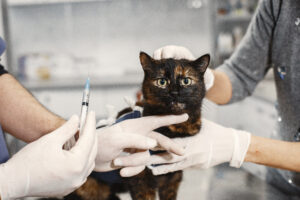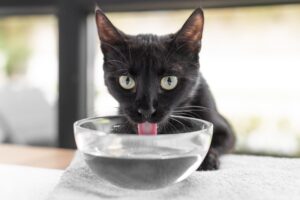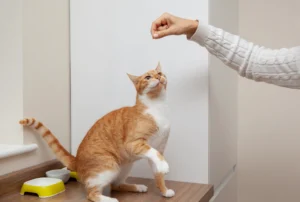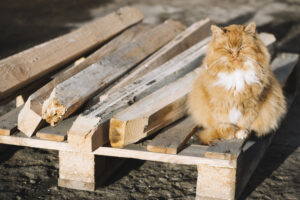Introduction
When most people think of cats, they envision sleek, straight fur that’s been the trademark of felines for centuries. However, there’s a unique and captivating world of curly haired cat breeds that have stolen the hearts of cat enthusiasts across the United States. These felines with magnificently crimped, wavy, or curly coats stand out in the cat kingdom, boasting distinctive appearances that turn heads and prompt questions from curious onlookers.
Curly haired cat breeds represent some of the most fascinating genetic mutations in domestic cats. Their distinctive coats aren’t just visually appealing—they often come with unique personalities and care requirements that make them special companions for the right owners. From the plush, woolly Selkirk Rex to the fine, wavy coat of the Cornish Rex, these curly fur cat breeds offer incredible diversity within their specialized category.
In this comprehensive guide, we’ll explore five remarkable cat breeds with curly hair that many people don’t know exist, plus one breed that potential owners might want to think twice about. Whether you’re considering adding a curly haired feline to your family or simply fascinated by these genetic marvels, this article will provide everything you need to know about these extraordinary cats.
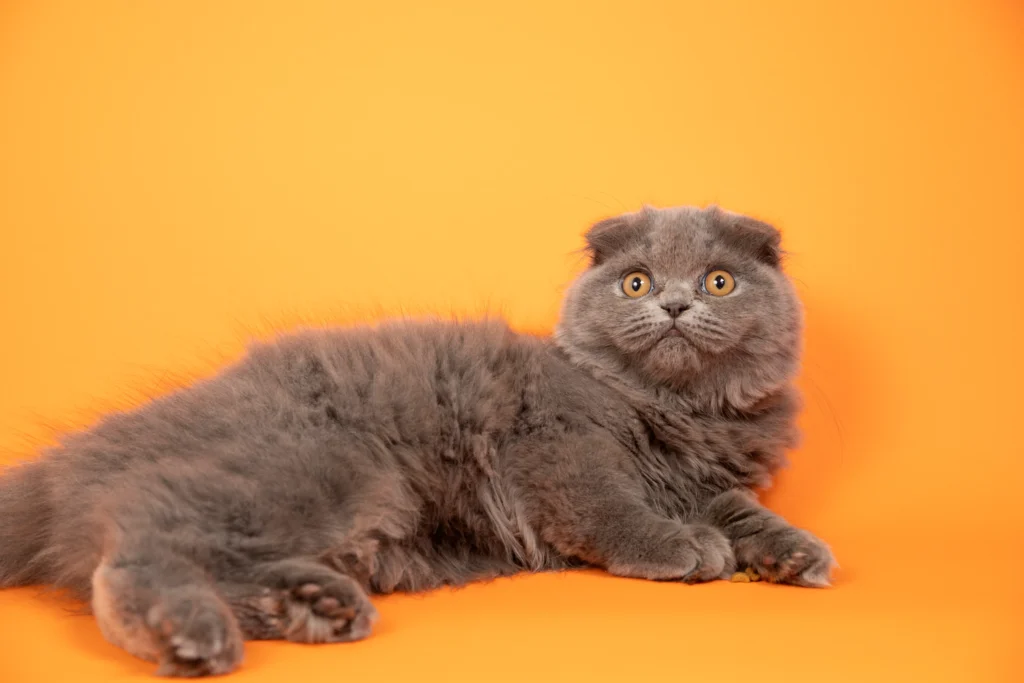
Understanding the Genetic Science Behind Curly Haired Cat Breeds
Before diving into specific curly coat cat breeds, it’s important to understand what makes these felines’ fur so distinctively different from their straight-haired counterparts. The unique curly cat fur genetics at play are fascinating examples of natural mutation.
Most curly haired cat breeds have developed through spontaneous genetic mutations that affect the growth and structure of their fur. These mutations primarily impact the hair follicles and how the keratin proteins form within each strand of fur. In most rex cat breeds (the common term for curly haired cats), a dominant gene is responsible for the distinctive curl pattern.
The curly hair trait in domestic cats was first documented in the early to mid-20th century, with different rex mutations appearing independently around the world. Each curly haired domestic cat breed carries its own specific genetic mutation that affects the coat differently—producing tight curls, waves, or crimped patterns depending on the specific breed.
Interestingly, curly whiskers cat breed specimens often display unique whisker characteristics as well. The same genetic factors that curl the fur can affect the whiskers, giving them a distinctive crimped or curled appearance that further sets these cats apart.
Understanding these curly cat fur genetics isn’t just academic—it helps explain the different characteristics, care needs, and potential health considerations associated with various curly haired cat breeds. Now, let’s explore the five most stunning curly haired cat breeds you might not be familiar with.
1. Selkirk Rex: The Teddy Bear of Curly Haired Cat Breeds
Among the most plush and cuddly of all curly fur cat breeds, the Selkirk Rex has earned the nickname “cat in sheep’s clothing” thanks to its incredibly soft, woolly coat. This breed originated in Montana in 1987 when a curly-coated kitten named Miss DePesto was born to a feral cat. Her unique coat caught the attention of a local breeder who developed what would become one of the most beloved cat breeds with curly hair.
Distinctive Characteristics of the Selkirk Rex
The Selkirk Rex stands out even among curly haired cat breeds due to its particularly luxurious coat. Unlike other rex cat breeds, the Selkirk’s curls are thick, plush, and present in all three hair types—guard hairs, down hairs, and awn hairs. This creates a full-bodied curly appearance that’s unmistakable.
Selkirk Rex cats can have either long or short hair, but both varieties showcase the breed’s signature random, unstructured curls. Their curly whiskers complement their coat, giving them an utterly charming appearance. These cats have substantial bodies with strong bones and well-padded frames that enhance their teddy bear-like appeal.
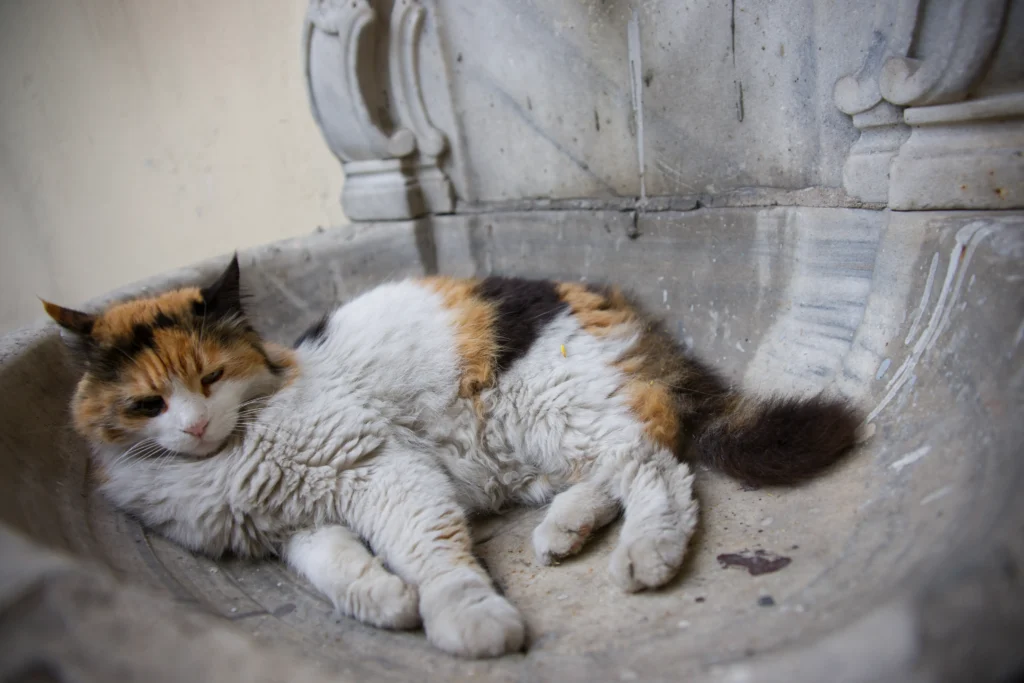
Personality and Care
The Selkirk Rex isn’t just a pretty face among curly haired cats names on breed lists. These cats are known for their patient, tolerant personalities. They blend the laid-back attitude of the Persian (one of the breeds used in their development) with the playfulness of the American Shorthair, making them excellent companions for families, including those with children.
Caring for a Selkirk Rex’s distinctive coat requires regular attention. Their curly fur can mat easily, so weekly gentle combing is essential. Interestingly, the density of their curls can vary throughout their lives—Selkirk Rex kittens may lose their curls temporarily before developing their adult coat, and the intensity of the curl can fluctuate with age, hormones, and even the seasons.
For those looking for hypoallergenic curly haired cats, it’s worth noting that while the Selkirk Rex’s unique coat might trap more dander (the primary allergen) than straight-haired cats, no cat breed is truly hypoallergenic. However, some allergy sufferers report varying levels of reactivity to different breeds.
The Selkirk Rex truly embodies what makes curly haired cat breeds so special—they’re unique in appearance but also bring wonderful personality traits that make them cherished companions.
2. Devon Rex: The Pixie of Curly Coat Cat Breeds
When discussing distinctive types of curly haired cats, the Devon Rex inevitably stands out with its elfin appearance and remarkably soft, wavy coat. First discovered in Devon, England, in 1960, this breed developed from a spontaneous genetic mutation that created its signature rippled fur pattern.
The Distinctive Devon Look
The Devon Rex features a unique coat among curly haired cat breeds—short, fine, and forming loose waves rather than tight curls. Their fur has been compared to a fine cashmere sweater or lambswool, with a texture that’s incredibly soft to the touch. What makes the Devon Rex particularly distinctive is its appearance: large ears set on a small, wedge-shaped head, slender body, and large eyes that give it an almost otherworldly appearance.
These cats often have very thin and sometimes curly whiskers that can be brittle and break easily—a hallmark of many curly whiskers cat breed examples. The Devon Rex’s coat is also thinner on the back, neck, and crown, sometimes creating natural bare patches that are completely normal for the breed.
Temperament and Living with a Devon Rex
Devon Rex cats are known as the “monkeys of the cat world” among curly haired cats names for good reason. These energetic, mischievous felines maintain kitten-like behavior well into adulthood. They’re highly intelligent and can learn tricks, play fetch, and solve puzzles that would challenge even the smartest straight-haired cats.
Devon Rex cats form strong bonds with their human families and are known to follow their people from room to room, perching on shoulders or curling up under blankets. They’re social creatures that don’t do well when left alone for extended periods, making them ideal for households where someone is usually home.
Caring for a Devon Rex’s special coat is relatively simple compared to other curly fur cat breeds. Their fine fur requires minimal grooming—too much brushing can actually damage their delicate coat. Instead, occasional wiping with a soft cloth helps remove oils that might otherwise build up on their skin.
For those living in colder climates, it’s worth noting that the Devon Rex’s thin coat provides less insulation than other cat breeds with curly hair. Many Devon owners find their cats seeking warm spots around the house or even wearing cat sweaters during winter months.
The Devon Rex represents a perfect example of how curly haired cat breeds can combine distinctive appearances with winning personalities, making them beloved companions for those lucky enough to share their homes with these pixie-like felines.
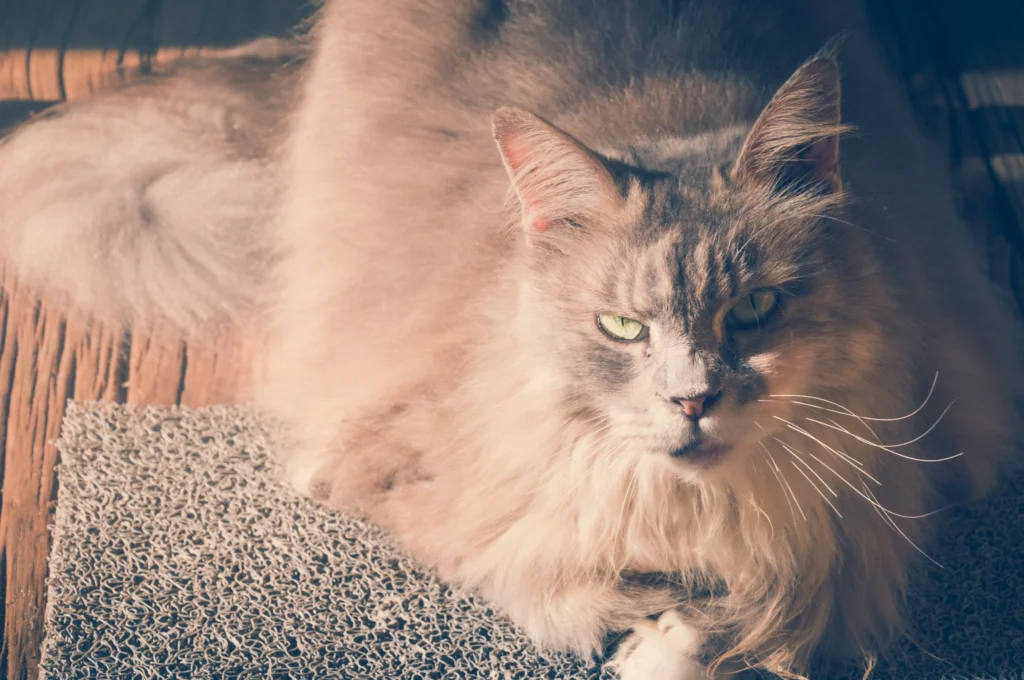
3. Cornish Rex: The Elegant Athlete Among Curly Haired Cat Breeds
The Cornish Rex holds a special place in the history of curly haired cat breeds as one of the first recognized rex mutations. First discovered in Cornwall, England, in 1950, this breed developed from a spontaneous genetic mutation in a litter of barn cats, producing a kitten named Kallibunker with an unusually wavy coat.
The Distinctive Cornish Rex Coat
Among cat breeds with curly hair, the Cornish Rex stands out for its extremely soft, wavy coat that’s been compared to cut velvet, rabbit fur, or karakul lamb. What makes their coat truly unique is that Cornish Rex cats lack the outer guard hairs that most cats have, possessing only the soft undercoat (down hair) and slightly longer middle layer (awn hair). This gives them their distinctive rippled appearance that sets them apart from other curly coat cat breeds.
The Cornish Rex’s whiskers and eyebrows share the curly trait, often appearing crinkled, curled, or broken—a definitive characteristic of this curly whiskers cat breed. Their distinctive coat comes in virtually every color and pattern found in the feline world, from solid colors to tabbies, calicos, and pointed patterns.
Personality and Lifestyle
The Cornish Rex is not just distinctive for its appearance—its personality is equally remarkable among curly haired cats names on breed lists. These cats remain playful and kitten-like well into their senior years, with an athletic ability that astounds many first-time owners. They can perform impressive jumps and are known to develop a repertoire of tricks and behaviors to entertain their human families.
Intelligent and people-oriented, the Cornish Rex forms strong bonds with their owners and thrives on interaction. They’re known for seeking warm places due to their thin coats, often curling up with human companions or finding sunny spots for napping. Many Cornish Rex owners report that their cats learn to operate under blankets or even cuddle under the covers at night.
Caring for a Cornish Rex is relatively straightforward compared to other cat breeds with curly hair. Their short, fine coats rarely mat and require minimal grooming—though their skin can become oily, so occasional bathing may be beneficial. Due to their thin coats, they tend to feel warm to the touch, leading to the misconception that they run a higher body temperature than other cats (they don’t—they simply have less insulation).
For those seeking hypoallergenic curly haired cats, the Cornish Rex is sometimes suggested as an option for mildly allergic individuals. While no cat is truly hypoallergenic, their minimal shedding means they distribute less dander into the environment, which may help some allergy sufferers.
The Cornish Rex exemplifies how curly haired cat breeds combine distinctive appearance with engaging personalities, making them fascinating companions for the right households.
4. LaPerm: The Natural Curly Wonder
Among the lesser-known but utterly charming curly haired cat breeds, the LaPerm stands out for its natural origins and distinctively curly coat. This breed developed spontaneously on an Oregon farm in 1982 when a barn cat gave birth to a litter that included a bald kitten. As this unusual kitten matured, she developed a coat of soft curls—the foundation of what would become one of the most distinctive types of curly haired cats.
The LaPerm’s Distinctive Features
The LaPerm’s most striking feature is undoubtedly its coat—loose, bouncy curls that give this breed a somewhat tousled, natural appearance unlike the more uniform curl patterns seen in some other curly fur cat breeds. Their coat can range from waves to tight ringlets, with longer-haired LaPerms often displaying more dramatic curls than their shorter-haired counterparts.
Unlike some other rex cat breeds, LaPerms have normal whiskers that may be curly or straight. Their curls are particularly prominent around the neck, forming a kind of ruff, and on the tail, which often resembles a bottlebrush. What makes the LaPerm particularly special among curly haired domestic cats is the variety in their coat texture—some have silky curls while others have more cottony ones.
Personality and Care
LaPerms are known for their affectionate, gentle temperaments among curly haired cats names in breed directories. They form strong bonds with their humans but aren’t typically as demanding of attention as some other breeds. These cats are moderately active, enjoying play sessions but also content to curl up in a lap for extended petting.
A particularly endearing trait of the LaPerm is their tendency to use their paws like hands—many owners report their LaPerms reaching out to touch their faces or tap their shoulders for attention. This, combined with their inquisitive nature, makes them engaging companions.
Caring for a LaPerm’s distinctive curly coat is surprisingly simple. Despite their curls, these cats are not heavy shedders, and their coat is less prone to matting than some might expect from curly haired cat breeds. Regular gentle combing or finger-combing is usually sufficient to maintain their curls in good condition.
For those interested in rare curly haired cat breeds, the LaPerm certainly qualifies—while recognized by major cat associations, they remain relatively uncommon, adding to their appeal for those seeking a distinctive feline companion that stands out from the typical domestic cat.
The LaPerm represents one of the most natural expressions of the curly hair mutation in domestic cats, with a coat that developed without human intervention and continues to charm cat lovers seeking something uniquely beautiful.
5. Ural Rex: The Rare Treasure Among Curly Haired Cat Breeds
When discussing rare curly haired cat breeds that most Americans haven’t encountered, the Ural Rex deserves special attention. Originating in Russia’s Ural mountain region, this distinctive breed represents one of the least known but most beautiful examples of curly fur cat breeds globally.
Discovering the Ural Rex
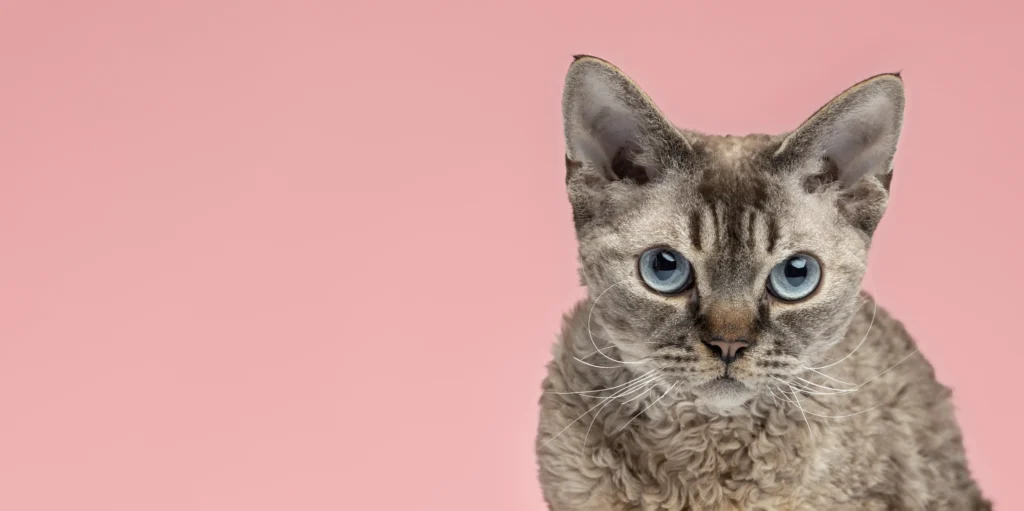
The Ural Rex developed naturally in the Ural region of Russia, with documentation of curly-coated cats in the area dating back to the 1940s. However, focused breeding programs only began in the 1990s, making this one of the newer recognized cat breeds with curly hair. Despite its relatively recent recognition, genetic testing has confirmed that the Ural Rex mutation is distinct from other rex mutations, giving these cats a unique place among types of curly haired cats.
The Ural Rex features a plush, soft coat with waves or curls that are typically more pronounced on the belly and flanks. Available in both short and medium-hair varieties, their coat has a distinctive silky texture that differs from other curly coat cat breeds. Their whiskers may be either straight or slightly curved, unlike the extremely curly whiskers found in some other rex breeds.
Personality and Rarity
Among curly haired cats names, the Ural Rex is known for its balanced temperament—playful and active but not hyperactive, affectionate without being demanding. These cats form strong bonds with their families and are known to be good with children and other pets, making them excellent family companions.
The Ural Rex remains extremely rare outside Eastern Europe, placing it firmly among the rare curly haired cat breeds most Americans will never encounter in person. This rarity adds to their allure for cat enthusiasts seeking truly unusual curly haired domestic cats.
Caring for a Ural Rex is similar to other short-haired cats, with minimal grooming requirements despite their curly coat. Their fur is less prone to matting than some other rex varieties, making them relatively low-maintenance compared to some curly haired cat breeds.
For those interested in small curly haired cat options, the Ural Rex tends to be a medium-sized cat with a lighter bone structure than some other breeds, giving them an elegant appearance that complements their distinctive coat.
The Ural Rex represents one of the most intriguing options on any curly cat breed list—distinctive, rare, and combining the appeal of curly fur with an excellent temperament for family living.
One to Avoid: American Wirehair – The Challenge Among Curly Haired Cat Breeds
While celebrating the diverse world of curly haired cat breeds, it’s important to acknowledge that not every curly-coated feline is the right match for every owner. The American Wirehair represents a curly cat breed that, while fascinating and attractive to some, presents specific challenges that potential owners should carefully consider.
Understanding the American Wirehair
The American Wirehair developed from a spontaneous mutation in a farm cat litter in upstate New York in 1966. Unlike the soft, plush curls of most rex cat breeds, the American Wirehair’s coat has a distinctly different texture—coarse, springy, and dense, often compared to steel wool or a Brillo pad. Each hair is hooked or crimped, creating a resilient coat that springs back when touched.
While technically among cat breeds with curly hair, the American Wirehair’s coat feels markedly different from the soft curls of breeds like the Selkirk Rex or Devon Rex. Some describe it as feeling like petting a wool carpet rather than the plush, soft feel typically associated with fluffy curly cats.
Challenges with the American Wirehair
Several factors make the American Wirehair potentially challenging for average cat owners:
- Grooming Complications: Their unique wire coat can be difficult to groom properly. The crimped hairs can trap oils and debris more effectively than straight hair, potentially leading to skin issues if not maintained properly.
- Availability Issues: The American Wirehair remains one of the rarest cat breeds in the United States despite its American origins, making them difficult to find from reputable breeders and potentially expensive.
- Genetic Health Concerns: Like many cats developed from a small genetic pool, American Wirehairs can face certain inherited health conditions that prospective owners should be aware of.
- Texture Sensitivity: Some people find the coarse texture of the American Wirehair’s coat less appealing for petting and cuddling compared to the soft, plush feel of other curly haired domestic cats.
For those specifically seeking hypoallergenic curly haired cats, the American Wirehair is not typically recommended as their unique coat can actually trap more dander and allergens than some other breeds.
This doesn’t mean the American Wirehair is a “bad” breed—they typically have friendly, adaptable personalities similar to their American Shorthair ancestors. However, their unique coat characteristics and rarity make them a more challenging choice for those simply seeking the aesthetic appeal and texture commonly associated with curly haired cat breeds.
How to Choose the Right Curly Haired Cat for Your Home
With so many fascinating cat breeds with curly hair to consider, selecting the right curly-coated companion requires thoughtful consideration of several factors. Here’s a comprehensive guide to help you navigate the world of curly fur cat breeds to find your perfect match.
Assessing Your Lifestyle Compatibility
Different curly haired cat breeds have distinctly different energy levels and social needs:
- High-Energy Households: The Devon Rex and Cornish Rex, with their playful, athletic tendencies, thrive in homes where they receive plenty of interactive play and stimulation.
- More Relaxed Environments: The Selkirk Rex and LaPerm tend to have more moderate energy levels, making them potentially better matches for quieter households or those with less time for vigorous play sessions.
- Families with Children: Most rex cat breeds, particularly the Selkirk Rex and LaPerm, are known for patient temperaments that work well with respectful children.
Grooming Considerations
Maintenance requirements vary significantly among curly haired cats names on breed lists:
- Lower Maintenance: The Devon Rex and Cornish Rex have fine, short curls that require minimal grooming—occasional wiping with a soft cloth is often sufficient.
- Moderate Grooming Needs: The LaPerm and Ural Rex benefit from weekly gentle combing to prevent their curls from tangling.
- Higher Maintenance: The Selkirk Rex, especially the longhaired variety, requires more regular grooming to prevent mats and tangles in their plush curls.
For those with allergies considering hypoallergenic curly haired cats, it’s worth arranging extended visits with the specific breed you’re considering, as individual reactions can vary significantly regardless of the breed’s reputation.
Space and Environmental Factors
When considering types of curly haired cats, remember that their special coats can affect their environmental needs:
- Temperature Sensitivity: The Devon Rex and Cornish Rex, with their fine, minimal coats, tend to seek warmth and may need sweaters or heated beds in cooler homes.
- Outdoor Access: Most curly haired domestic cats, particularly the fine-coated varieties, are best kept as indoor-only pets, as their unique coats provide less protection from the elements.
- Multi-Pet Households: Consider how a new curly-coated feline will integrate with existing pets. Breeds like the LaPerm and Selkirk Rex typically adjust well to homes with other animals.
Finding Reputable Sources
When searching for rare curly haired cat breeds:
- Work with reputable breeders who perform health testing and prioritize temperament and well-being over extreme physical traits.
- Consider adoption—while purebred curly haired cats rarely end up in shelters, breed-specific rescue organizations sometimes have rex cats available for adoption.
- Be patient—some curly cat breed list entries, particularly the Ural Rex, are exceedingly rare in the United States and may require extended waiting periods.
Remember that while the distinctive appearance of curly fur cat breeds may initially attract attention, temperament compatibility with your household should be the primary consideration for a successful long-term relationship with your curly-coated companion.
Caring for Your Curly Haired Cat: Special Considerations
Owning any of the fascinating curly haired cat breeds comes with specific care considerations that differ somewhat from those of straight-haired cats. Understanding these unique needs helps ensure your curly-coated companion remains healthy and their distinctive fur stays in optimal condition.
Specialized Grooming Approaches
Different cat breeds with curly hair require tailored grooming techniques:
- Gentle Handling: Most curly coat cat breeds have more delicate fur than their straight-haired counterparts. Use wide-toothed combs rather than brushes, and never pull on tangles.
- Bathing Considerations: Many rex cat breeds benefit from occasional bathing with appropriate cat shampoos, as their unique coats can become oilier than straight coats. However, over-bathing can dry out their skin.
- Eye and Ear Care: Some curly haired cats names on breed lists, particularly those with sparse facial fur like the Devon Rex, may need more regular eye cleaning as they have less fur to wick away tears.
Environmental Adaptations
Creating the right environment for your curly haired domestic cat helps them thrive:
- Temperature Management: Provide warm sleeping spots for fine-coated curly breeds, especially during winter months. Heated cat beds or cozy hideaways can be particularly appreciated.
- Sun Protection: Some curly whiskers cat breed specimens have thinner fur that provides less protection from sun exposure. Limit direct sunlight exposure for these cats, particularly for lighter-colored individuals.
- Humidity Considerations: Some curly haired cat breeds, particularly the Cornish Rex and Devon Rex, do better in moderately humid environments, as extremely dry air can make their skin flaky.
Health Monitoring
Staying alert to potential health issues specific to curly fur cat breeds is essential:
- Skin Conditions: The unique coat structure of some types of curly haired cats makes them more prone to certain skin issues. Regular checks for redness, flaking, or excessive oiliness help catch problems early.
- Dental Care: While not directly related to their curly coats, many purebred cats, including rare curly haired cat breeds, may have genetic predispositions to dental issues, making regular dental care important.
- Weight Management: The proper weight for small curly haired cat breeds may differ from larger varieties. Work with your veterinarian to establish healthy weight goals specific to your cat’s breed and build.
Finding Veterinary Care
Not all veterinarians have extensive experience with the specific needs of curly haired cat breeds:
- Seek veterinarians familiar with the unique characteristics of rex cats when possible.
- Consider compiling information about your specific breed’s genetic background and potential health concerns to share with less-experienced veterinarians.
- For owners of extremely rare curly haired cat breeds like the Ural Rex, connecting with breed clubs or online communities can provide valuable support and specialized care information.
With proper care tailored to their specific needs, curly fur cat breeds can live long, healthy lives while maintaining the distinctive coats that make them such fascinating companions.
Conclusion: Embracing the Unique World of Curly Haired Cat Breeds
The diverse and fascinating world of curly haired cat breeds offers something truly special for feline enthusiasts. From the woolly teddy-bear-like Selkirk Rex to the fine-coated, elfin Devon Rex, cat breeds with curly hair represent some of the most distinctive and charming options in the feline kingdom. Each of these curly coat cat breeds brings its own unique combination of appearance, temperament, and care requirements, creating a rich tapestry of options for potential owners.
The genetic marvels that create these rex cat breeds have given us companions that stand out not just for their unusual appearances but also for their winning personalities. Whether you’re drawn to the mischievous energy of the Cornish Rex, the natural tousled curls of the LaPerm, or the rare elegance of the Ural Rex, there’s a curly-coated feline that might be the perfect match for your household.
When considering bringing one of these special curly haired cats names into your home, remember to look beyond the distinctive coat to ensure the breed’s energy level, sociability, and care requirements align with your lifestyle and expectations. While the American Wirehair may present unique challenges that make it less suitable for some owners, the wealth of other curly fur cat breeds offers plenty of alternatives.
For those fascinated by the science behind these unique felines, learning about curly cat fur genetics can deepen appreciation for the natural mutations that have created such diversity within domestic cats. And for allergy sufferers hoping that hypoallergenic curly haired cats might be the answer to their concerns, careful research and spending time with specific breeds before committing can help determine individual compatibility.
Whether you’re considering adding one of these distinctive types of curly haired cats to your family or simply appreciating their unique beauty from afar, curly haired cat breeds certainly add wonderful diversity to the world of domestic cats. With their special coats, engaging personalities, and often fascinating histories, these curly haired domestic cats truly represent some of the most remarkable examples of feline evolution and selective breeding.
From rare curly haired cat breeds to the more commonly seen varieties, these special felines continue to capture the hearts of cat lovers searching for companions that stand out from the crowd while providing all the love and companionship that makes cats such beloved pets.
Additional Resources for Curly Haired Cat Enthusiasts
For those wanting to learn more about these fascinating felines, consider exploring these trusted resources:
- The Cat Fanciers’ Association – Official information on recognized curly cat breed standards
- International Cat Association – Detailed profiles of rex breeds and upcoming cat shows
- Cornell University College of Veterinary Medicine – Research on feline genetics and health
- PetsPump Cat Breed Guides – Additional information on various cat breeds and their care
Remember, whether you choose a Selkirk Rex, Devon Rex, Cornish Rex, LaPerm, Ural Rex, or any other curly coated feline, providing loving care tailored to their specific needs will ensure many years of companionship with these extraordinary cats.
This comprehensive guide to curly haired cat breeds was created exclusively for PetsPump, your trusted source for in-depth pet care information and advice.



